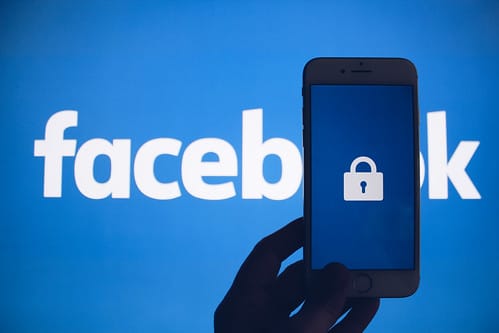eCommerce Guide to Facebook Advertising
Check out this amazing eCommerce guide to Facebook advertising and learn how to setup successful campaigns to get more sales.
9 min read
 Tim Bucciarelli
:
May 10, 2022
Tim Bucciarelli
:
May 10, 2022
.png)
Hi, my name is Tony Mascarenas, and I'm an account executive. I'm responsible for a lot of the outreach and outbound efforts for IronPlane to bring in new clients and build a lot of connections and partner building. Basically, I do business development. My background is in advertising and marketing, and now I'm working in eCommerce. I am happy to blend the two pieces of knowledge to help our clients. Plus, share my knowledge of paid advertising and eCommerce with our viewers.
Visit the Shaping eCommerce Channel on Youtube to watch our full eCommerce
Marketing Series. We release new content every week, so please
subscribe to our channel and make sure to hit the notification bell!
First off, I think that every brand or every eCommerce store should be doing advertising. Particularly, if you want to grow your business, and unless you're sold out on all your products, you probably should have some type of advertising strategy in place. So I definitely recommend everyone launch some type of marketing campaign, whether it's digital or even in-store live events, to make sure that you are making your customer base aware that you exist and growing that customer base. I definitely think you need to grow your sphere of influence. So yes, everyone should have some type of advertising strategy.
First, there's a set of steps that you should go through. What are your goals for your advertising? What do you want your advertising campaign and your marketing strategy to do for you? Is it to sell products? Is it to create awareness or some type of engagement? Are you looking for subscriptions? This will tell you what you need and what kind of results you want from your advertising campaign.
Secondly, I would definitely put together some type of tracking mechanism, whether a promo code, analytics, or tracking mechanisms on your website, to ensure your campaigns align with your advertising strategy. Next, as you start spending money on your different campaigns, you will learn what is working.
With the budget, there are a lot of rules of thumb. Again, if you set a budget, you have to stick to it, even if you don't see the immediate results. Because advertising takes time, it takes an investment. It's like a snowball - the first little bit of it is small, but then you keep on building and building, and it actually gets bigger, and the awareness of your products gets bigger.
So a couple of rules of thumb for a B2B business. It's recommended to take 2% to 5% of the company revenue and place that towards your advertising budget. Now, if you're a B2C or D2C company, you're looking at more of a 5% to 10% of your company revenue to set up your advertising spend. And again, I've seen companies put together the budget, and then if it doesn't work right away, they pull back. You can optimize it throughout the campaign, but you need to let it go and continue with the investment throughout your year budget.
What are some best practices for advertising budgets?
After you've got your number established, there are some ways to determine the channels you're going to advertise and your target audience. So the channels can be determined by your audience. Whether you're going to put it onto social media, trade publications, websites, or if you're going to do programmatic advertising. We will get into all these different types of advertising a little later.
But one of the good things to do is, determine the channels by the audience. Who is your target audience? How are you going to access them?
Obviously, for eCommerce brands, it will be digital advertising. Whether it's banner ads, Google AdWords, or emails, your business has an eCommerce website already online. So attracting your customers who are already in that environment, who are shopping online, or doing shopping research to find your brand. So, digital advertising is a good fit.
Some of the other medias are print, and you mentioned in-store. I've done a lot of print ads in the past, and you can see success with print ads. You have to make sure you're targeting the right places and make it very clear that you have to go to a website to access your brand and your products.
Some other types of ads are in-store. So, if you do have a brick-and-mortar store, this is key to make sure that everyone sees the same message on your website and in-store. Maybe place some QR codes in-store so shoppers can jump right onto your website or sign up for an email newsletter.
For brick-and-mortar stores, make sure you have those information-gathering tools in the store to find out who your customers are and get that data because we know that first-person data is valuable. It's gold to the survival of stores right now with all the different challenges that Facebook, Google, and Apple have put in place to target people. Knowing who your customer is - is key. So if you have a store, even if you have people going to your website, make sure you're engaging with them, for example, get their email address and so forth.
Yes, I agree with that in terms of getting email and capturing all that data. Then, having a cohesive branding strategy across the board. As you mentioned, having your in-store branding similar to your digital marketing branding and messaging on your website.
As a business owner, you probably know who's using your products or buying them. Some of the information and tools you'll use are Google analytics on your website to see where people are coming from. If you have social media channels, this is also a great way to determine who your audience is. Next, there are customer surveys and quizzes you can put on your website. With your website, you have information on them. Then you can use that information to not only advertise to them, but provide customer service and give them a great customer experience.
Then again, you can always look at the tools I mentioned. For example, SEMrush looks at your competitors. Ideally, what you want to do with all this information is, you want to build a customer persona. This will help you find particular customer demographics. For example, maybe it's women who love smoothies and working out. Then, you know, that's the persona for this particular product. Next, find that persona across all different channels. And that's how you will be able to target the customers who are most likely to purchase your products.
Especially with social media, being able to engage with your audience in real-time on social media channels can provide valuable information to different eCommerce brands and business owners.
It is such an important part of business today. Particularly, in eCommerce is to put the right message out there. For example, if you're an eco eco-friendly company, you want to make sure all your information is spot on with your customers who have a particular interest. If they care about something, in particular, your brand is filling that niche. So if you're a luxury brand, you don't want to promote any type of discount. If you're an eco-friendly brand (this is not quite advertising), but you do not want to send something out in plastic - that might not be the best message. But then also, letting people know your company is concerned about the environment.
Next, look for trends; who are you talking to - is it the younger audience? Your messaging may need to be more casual. You can have more of a laid-back message across various channels. But your tone of communication is really important today. Because there's so much competition and so much noise, try to relate with your customers. Make them feel that you not only care about them, but you care about causes. Maybe donate a portion of your proceeds to charity. That would be a great message that does two things. One, it helps the charity. And two, it also gains brand loyalty if you're trying to build that type of imagery of a brand.
For some companies, you can heavily promote sales and discounts, but that can get dicey pretty quickly. Because if you want to get into the discount competition game, there's always going to be someone else who will try to underprice you. For the long-term longevity of a brand, find your own voice that really impacts your customer. Become an actual evangelist for your brand, so your customers grow to love your brand, and they want to tell their friends about it. The messaging is very important. You don't want to go out there and just say, "Hey, 20% off everything," because that's not really saying a whole lot about who you are as a company.
You have to have some kind of strategy behind your messaging. I do think it's important to have your own style. For example, have a more relaxed style if you're a surf shop, and if you're a luxury brand, maybe be a little more formal in your messaging. Keep your messaging strategy across the board consistent with your tone.
It is about consistency. Keep it very direct and appealing to your audience. And not only that but actually believing in it. So when customers come to your website, they will see that your message in your advertising is reflected on your website as well.
Consumers are getting more savvy. They know if the messaging is on-brand or not. So it's really important to be consistent. Also, they know when they're being sold to and when it's not a genuine type of message. Consumers go to a website several times before they make it to the checkout cart. So it's important to keep the messaging consistent and genuine. Like I said, if you're using humor in your messaging, then you have to be the same way on your website. If you're selling some type of medication, then you need to keep it very informative and formal, and that goes for your advertising as well.
Well, that's a great question. Because a lot of people will just go ahead and get a couple of ads built and then run them to see if it works or make their office manager become their marketing arm, or maybe the boss thinks he knows about marketing. But today, there are just too many channels, and unless you have a dedicated team in-house, you should consider hiring an outside marketing agency. One of the reasons that an agency makes sense is because that's all they do - all day, every day. They have a particular group of people that probably have a ton of experience from their whole career that they can contribute to making your brand successful.
Typically it depends on the agency. It's going to be less expensive than hiring people and having them work full-time in-house. Also, having an agency will keep you a little more nimble, and that way, you can just hire out. They come in, and it's professionally done. They should have all the T's crossed and the I's dotted and the buttons pushed for your campaign. Particularly when they're starting to engage with the digital campaigns.
So how do you choose them? You can look in your particular industry to see if there are some agencies that specialize in your industry or products. You can also do a Google search, do some interviews, and talk to agencies to see what their style is. Agencies are more than willing to put together a quick proposal with some ideas to help you build your brand, implement some advertising, and help you get more sales. I would talk to at least three different agencies and ask for some proposals. After you have gathered some information, have your team, CEO, and your Marketing Manager or Head of Marketing see which agency is the best fit for your brand. Because they're going to be an extension of your company, so make sure you are comfortable with them.
Want more sales? We are ready to build you a revenue-generating affiliate program with a network of engaged affiliate partners and influencers. Visit our eCommerce Marketing Agency and eCommerce Social Media Marketing pages to learn more about our services, and click here to schedule a free consultation today.
IronPlane is an eCommerce marketing agency and eCommerce Solutions Partner that provides integrated services tailored to your business goals. IronPlane offers web development solutions in Adobe / Magento and BigCommerce and delivers integrated marketing strategies across channels to increase brand awareness, website traffic, and online revenue.

Check out this amazing eCommerce guide to Facebook advertising and learn how to setup successful campaigns to get more sales.

Is your eCommerce website optimized for conversions? Learn how to optimize your eCommerce store for conversions.
.png)
For our eCommerce Marketing Series, Digital Media Manager Susan Rapp discusses affiliate marketing and how to use it to boost awareness, reach, and sales.